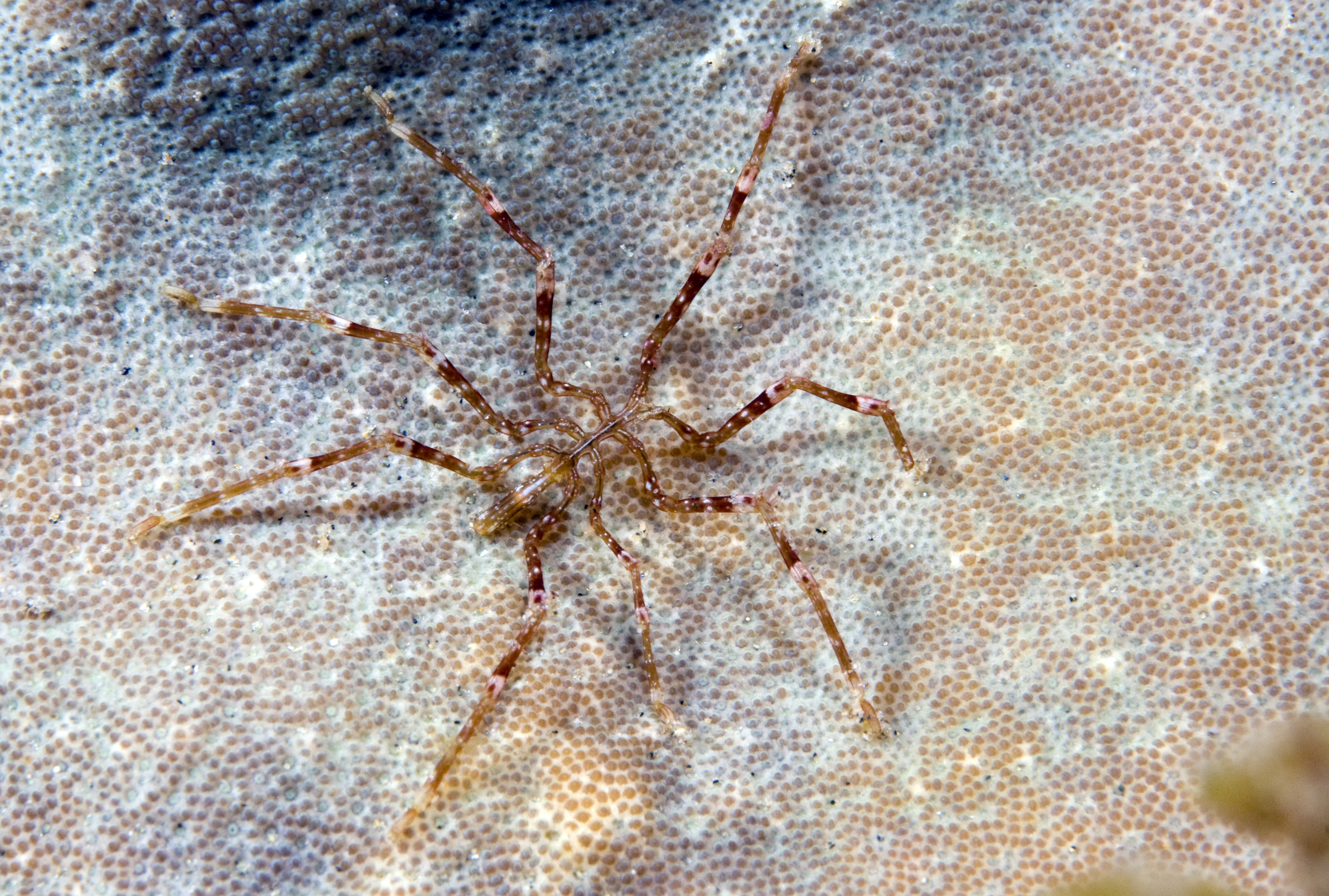Sea spider is an ocean animal that generally has eight legs. Sea spiders are not true spiders. Instead, they are a unique group of arthropods. Arthropods are animals with jointed legs and no backbones. Scientists have identified more than 1,000 species (kinds) of sea spiders, but many more probably remain undiscovered. Little is known about most of these species.

Sea spiders have long legs that grow from a tiny body. Many sea spiders are slender and delicate. Others are chunky and robust. Most sea spiders are small, especially those found in shallow waters. The smallest reach less than 1/10 inch (3 millimeters) across, including the legs. The largest grow to more than 28 inches (70 centimeters) across. Large sea spiders live in the deep sea and waters near Antarctica. Sea spiders live in all the oceans, from the shallows to depths greater than 20,000 feet (6,000 meters).
Sea spiders feed by grabbing prey with their chelifores (spiderlike mouthparts). They then pierce the prey and suck out the fluids within. The tiny mouth is at the end of a long tube called the proboscis. Sea spiders feed on invertebrates (animals without backbones), especially those that are slow or fixed in place. They seem to prefer such prey as bryozoans, hydroids, and sponges. Bryozoans and hydroids are animals that live together in groups called colonies. These colonies often resemble mosses or seaweeds. Sea spiders also eat sea slugs and worms. Many sea spiders have colors and patterns that help them to blend in with hydroids or algae. Some are brightly colored, possibly to warn away predators (hunting animals).
Fossil evidence suggests that sea spiders may have appeared more than 500 million years ago. They are sometimes called “living fossils,” because they closely resemble their ancient relatives.
